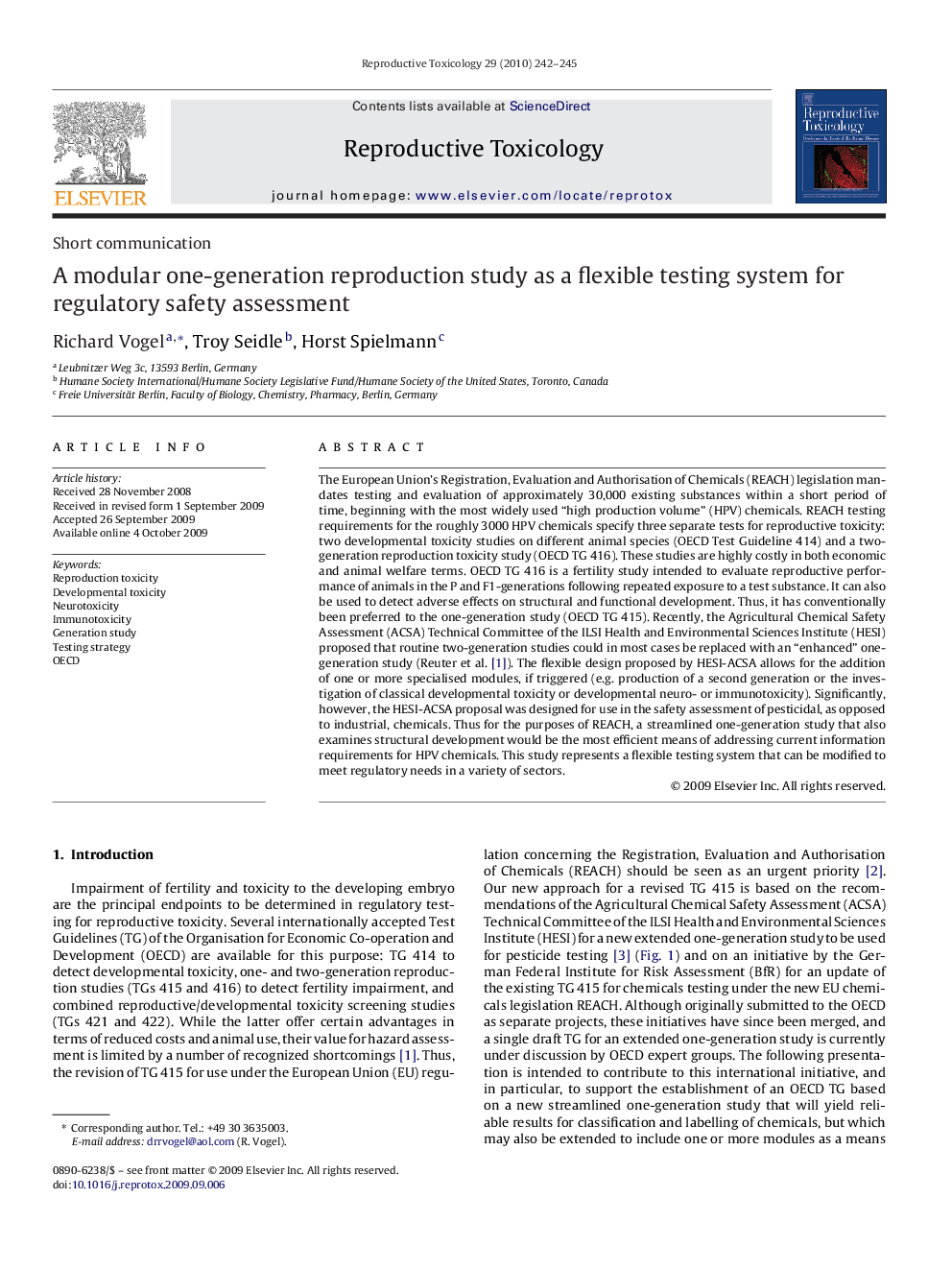| کد مقاله | کد نشریه | سال انتشار | مقاله انگلیسی | نسخه تمام متن |
|---|---|---|---|---|
| 2594280 | 1132262 | 2010 | 4 صفحه PDF | دانلود رایگان |

The European Union's Registration, Evaluation and Authorisation of Chemicals (REACH) legislation mandates testing and evaluation of approximately 30,000 existing substances within a short period of time, beginning with the most widely used “high production volume” (HPV) chemicals. REACH testing requirements for the roughly 3000 HPV chemicals specify three separate tests for reproductive toxicity: two developmental toxicity studies on different animal species (OECD Test Guideline 414) and a two-generation reproduction toxicity study (OECD TG 416). These studies are highly costly in both economic and animal welfare terms. OECD TG 416 is a fertility study intended to evaluate reproductive performance of animals in the P and F1-generations following repeated exposure to a test substance. It can also be used to detect adverse effects on structural and functional development. Thus, it has conventionally been preferred to the one-generation study (OECD TG 415). Recently, the Agricultural Chemical Safety Assessment (ACSA) Technical Committee of the ILSI Health and Environmental Sciences Institute (HESI) proposed that routine two-generation studies could in most cases be replaced with an “enhanced” one-generation study (Reuter et al. [1]). The flexible design proposed by HESI-ACSA allows for the addition of one or more specialised modules, if triggered (e.g. production of a second generation or the investigation of classical developmental toxicity or developmental neuro- or immunotoxicity). Significantly, however, the HESI-ACSA proposal was designed for use in the safety assessment of pesticidal, as opposed to industrial, chemicals. Thus for the purposes of REACH, a streamlined one-generation study that also examines structural development would be the most efficient means of addressing current information requirements for HPV chemicals. This study represents a flexible testing system that can be modified to meet regulatory needs in a variety of sectors.
Journal: Reproductive Toxicology - Volume 29, Issue 2, April 2010, Pages 242–245